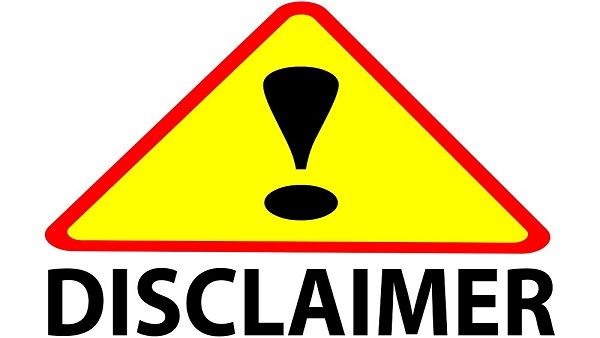The arrest of Former SBI Chair Pratip Chaudhuri sends a clear message to the bankers that they must lot of due diligence of companies particularly NBFCs whose boards they are joining post-retirement, says Amarjit Chopra, who has held several directorships in public sector banks, and was also a former president at the Institute of Chartered Accountants of India (ICAI).
“Firstly credentials of promoters and secondly past relationship of bankers in their various capacities in banks with such companies need to be kept in mind. Not following this gives rise to unnecessary suspicion and speculations,” Chopra said, as he reflected on the arrest of Chaudhari’s arrest by Enforcement Directorate earlier this month in connection with a loan scam case. Below are edited excerpts from the interaction:
Q: What is your initial impression on the arrest of Ex SBI Chair Pratip Chaudhuri in a loan scam case?
Amarjit Chopra: It is extremely unfortunate that a person of his stature with an impeccable track record has been arrested without an appreciation of facts. His reputation has been tarnished for no reason. And to me his arrest is a big setback to the morale of banking personnel particularly when the economy needs a boost in credit expansion
Q: SBI Chair Dinesh Kumar Khara has said Chaudhuri has not been given an opportunity to be heard, Also, many bankers have described this as high handedness by enforcement agencies/ police. What is your view?
Amarjit Chopra: From the reports it appears that Pratip Chaudhuri was not given any opportunity to be heard before his arrest. Prima facie his arrest reflects high handedness on the part of enforcement agencies and police.
One needs to understand the facts to appreciate the wrong done to Pratip Chaudhuri. The promoters of the Jaisalmer hotel project, Garh Rajwada, approached SBI for a loan to construct a hotel. The loan of Rs 24 crore would have been sanctioned following a process. Going by the amount and the fact that the bank involved was SBI the case would not have gone to the level of MD/Chairman of that period..
Loan proposal along with technical and financial feasibility report of the project, valuation report of the land and other documents etc would have been obtained and appraised before any recommendation for sanction of loan by any official/ committee.
The loan was disbursed in the year 2008. The borrower did not complete the project. A key promoter passed away in 2010. Needless to say that as per banking norms opportunities would have been given to the borrower to settle the amount or to complete the project which the promoters failed to do. Consequently, the loan was classified as NPA.
Going by my experience in all such cases the banks do try to persuade the borrowers in such cases to settle the matter before resorting to other measures. This case would have been no exception to the same. In this case as the promoters neither settled the account nor completed the project the bank was left with no alternative but to follow the process of selling the NPA to ARC Alchemist in 2014 and ARC stepped into the shoes of the lender bank. This was done four years after the death of the key promoter.
Q: What according to you could have prompted the enforcement agencies to arrest Chaudhuri in the first place?
Amarjit Chopra:
It may be interesting to note that Pratip Chaudhuri became Chairman in April 2011 i.e. after sanction and disbursal of loan and rather after the account had turned NPA and retired in September 2013 i.e. before the sale of the asset to ARC Alchemist..
Pratip Chaudhuri joined Alchemist Board in October 2014 after completing a mandatory cooling period of one year after his retirement from SBI. Alchemist had stepped into the shoes of the lender by acquiring the asset. To my mind, ARC would have tried to negotiate it with borrowers but later on sold the asset to another party, an NBFC in 2017.
So far as I understand the process clearly, the bank before selling the asset to ARC Alchemist would have obtained a valuation report and would have advertised the sale in newspapers. In case promoters had any objection they should have filed the objection at that time rather than filing any complaint later after the sale of the asset. They had an opportunity to settle the account presale with the bank and postsale with ARC. So, there appears to be no justification in their filing a protest petition with Chief Judicial Magistrate later and alleging sale of the asset at lower price.
It is surprising that the court has taken cognisance of a complaint by a defaulter who failed to execute the project and later on refused to settle the account. Enforcement agencies having taken cognisance of such complaints would only encourage more financial indiscipline on the part of defaulters..
It is crystal clear that Pratip Chaudhuri was not even Chairman of SBI when the sale to ARC happened. So the allegation against him cannot be in his capacity as a banker. A protest petition has been filed against ARC Alchemist and all of its directors without making SBI a party. It is shocking that Alok Dhir, the promoter of ARC Alchemist, has evaded arrest. It may not be wrong to presume that the action that Chaudhuri faces is not because of being Chairman of SBI. Rather he faces this action being on the Board of ARC Alchemist as this company was involved in the purchase and sale of the asset.
Q: Does Enforcement Directorate seem to have jumped the gun in this case?
Amarjit Chopra: Probably yes! The Supreme Court in a recent judgement in case of Ravindranatha Bajpe versus Mangalore Special Economic Zone Ltd and others has clearly held that no vicarious liability would come on any director for any criminal offences of the company till the time it is proved that he had consented or had knowledge of a fraud.
In the given case based on protest petition even if enforcement agencies/police had to proceed, the same could have been based on investigations into conduct of various parties including the borrowers and the findings thereof. An action like arrest cannot be based upon surmises and conjectures..
Q: What does Chaudhuri’s arrest imply for the banking industry?
Amarjit Chopra: In recent years after the arrest of certain top functionaries of Bank of Maharashtra, IDBI etc bankers had become risk-averse and the same affected credit expansion adversely. The slowdown in credit expansion also resulted in economic sluggishness in the country.
It may be worthwhile to point out that Bank of Maharashtra officials were later exonerated of all charges but the damage was done to the morale of banking staff.
A couple of days back the government issued instructions to ensure that enforcement agencies need to distinguish between genuine banking business decisions and actions taken with an intent to defraud. It was done primarily with a view to infuse confidence in bankers that a protection cover is being provided to them for their genuine business decisions.
But this one case has nullified the impact of those instructions. It is despite the fact that apparently, this action against Chaudhuri has nothing to do with his role as a banker as stated earlier.
In my opinion, going by human psychology it would certainly affect credit expansion as well as cleaning up of the balance sheets of banks particularly through sales of bad loans to ARCs. Here I will certainly like to add that all these years the role of various ARCs has not been free from controversy and needs to be looked into. The government and RBI would do well to constitute a group to suggest some measures to improve the functioning of ARCs..
Q: What is the signal reflected by the enforcement agencies here?
Amarjit Chopra: It is difficult to answer. But one message is loud and clear that top functionaries in banks need to do a lot of due diligence of companies, particularly NBFCs whose boards they are joining post-retirement. Firstly credentials of promoters and secondly past relationship of bankers in their various capacities in banks with such companies need to be kept in mind. Not following this gives rise to unnecessary suspicion and speculations.
Motives can be imputed and at times certain genuine business decisions may be looked at with a different mindset by public and enforcement agencies. Keeping oneself engaged post-retirement is fine but joining the boards of companies with which one has dealt with in various capacities as banker may not be a healthy trend..
Unfortunately in the recent past, there has been an increasing trend amongst bankers and bureaucrats joining the boards of such companies that they dealt with as senior functionaries. One may be honest but it is equally important to appear as honest.
It may not be an exaggeration to say that enforcement agencies in the given case probably acted upon the surmise that Chaudhuri happens to be a director on the board of Alchemist and earlier he and the company had a business relationship. So, better avoid such conflicted appearing positions.
Q: Do you have any suggestions for the government/ RBI?
Amarjit Chopra: The government and RBI would do well to review the extent of mandatory cooling period that officials of banks and bureaucrats may have to observe post-retirement before taking up an assignment with private entities, particularly whose files they have dealt with in the last three years of their official position.









